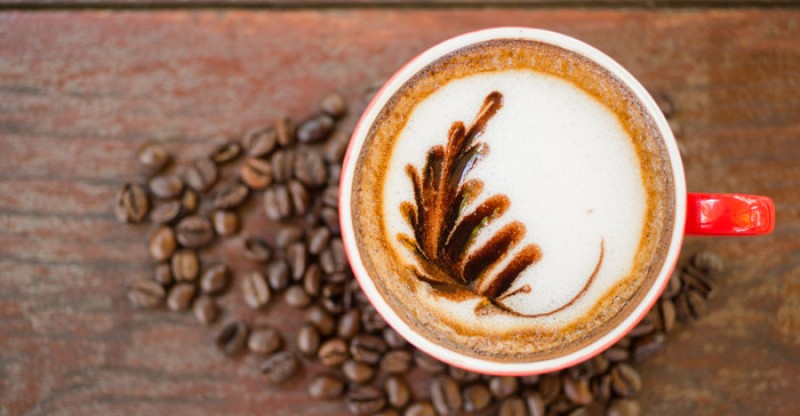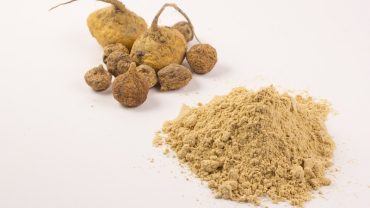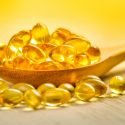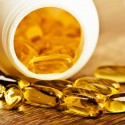How Much Caffeine is in a Cup of Coffee?
Most people don’t worry about the amount of caffeine in their coffee, but from a health perspective, it’s important to know how much caffeine you ingest.
The type and age of the bean used when making coffee may determine the final caffeine content in the drink.
Regardless of the type of coffee, you’re consuming, coffee is usually the single largest source of caffeine since it contains much larger amounts of caffeine than tea (regardless of the type).
According to research, you should expect an average of 95mg of caffeine per cup of coffee (1).
However, the amount may vary from the type of coffee being consumed.
Caffeine content in a cup of coffee can vary from 0 to 500 mg, and you may be asking yourself: is it possible to have a coffee with 0 mg of caffeine?
Factors that Affect the Quantity of Caffeine in a Coffee Drink
There are several factors that play important roles in the amount of caffeine found in a cup of coffee drink:
- The type of coffee beans used in making a coffee is the most critical factor that determines the amount of caffeine.
- The more roasting time spent and the darker the coffee becomes, the less caffeine is present. In other words, lighter coffee has more caffeine than darker coffee. The darker roasts also provide a richer flavor.
- The type of coffee consumed can also determine the level of coffee within. For instance, there are different types of coffee. Each has varying amounts of coffee, which include regularly brewed coffee, decaf coffee, espresso, and instant coffee.
- Generally, the larger the serving size, the likelier is that you’ll get a larger amount of caffeine. A cup of coffee can provide between 30 and 700 ml of coffee.
How Much Caffeine Is in…
…Brewed Coffee?
According to a review published in Critic Rev Food Science and Nutrition Journal (3) and the US National library of Medicine Journal (4), brewing is generally the most common way to make coffee around the world.
Brewed coffee is also referred to as regular coffee, and it involves pouring boiling or hot water over the ground beans, which are placed on filter paper.
A cup of brewed coffee may contain between 70 and 140 mg of caffeine, which means an average of 95mg of caffeine is usually contained in a cup of brewed coffee.
…Espresso?
Espresso is normally produced by forcing a small amount of hot water or steam through finely ground coffee beans.
It’s believed that espresso coffee contains higher amounts of coffee than the regular coffee at the same volume, but it seems to contain less caffeine per serving, considering the fact that espresso serving is usually smaller than the brewed coffee serving.
A single shot of espresso is expected to contain between 30 and 50 ml of coffee, which means it contains approximately 63 mg of caffeine.
Two shots of Espresso contain roughly 125 mg of caffeine (5).
…An Espresso-based Drink?
Most of the popular coffee drinks today are prepared from espresso shots, then mixed with various kinds of components, such as milk, sugar, and other flavors.
Some of the popular espresso-based drinks include macchiato, cappuccino, and Americano.
The milk and other flavors used in preparing these types of coffee don’t add up to the total caffeine levels in the drinks, but they do contain the same amount of caffeine as a standard shot of espresso.
A single shot or small cup of espresso contains an average of 63 mg of caffeine, while the double and large cups contain an average of 125mg of caffeine.
…Instant Coffee?
Instant coffee is a variation of a coffee drink that’s created from brewed coffee, then freeze-dried or spray-dried.
This type of coffee is generally larger, and it comes in dry pieces.
Hence, it readily dissolves in water.
In order to prepare your instant coffee, you need to mix one or two teaspoons of the dried coffee inside hot water and stir.
You don’t need to brew this type of coffee once it’s been dissolved in hot water.
In most cases, instant coffee contains less caffeine than regular coffee.
One cup of instant coffee should contain between 30 and 90 mg of caffeine.
…Decaf Coffee?
The name decaf coffee may be deceiving because it’s not completely caffeine-free.
This type of coffee may contain varying caffeine levels, ranging from 0-7 mg per single cup of coffee.
On average, a cup contains roughly 3.5 mg of caffeine.
The name decaf coffee may be deceiving because it’s not completely caffeine-free.
This type of coffee may contain varying caffeine levels, ranging from 0-7 mg per single cup of coffee.
On average, a cup contains roughly 3.5 mg of caffeine.
Comparing the three main types of coffee highlighted above, one can conclude that brewed coffee contains more caffeine than espresso and espresso-based drinks.
The average 8 oz cup of brewed coffee contains roughly 95mg, while the espresso and the espresso-based drink contain an average of 63 mg.
Decaf coffee contains the least amount of caffeine, with an average 8 oz cup containing 3 mg of caffeine.
Are the Commercial Brands of Coffee Drinks More Caffeinated?
It’s well-known that numerous commercial coffee drinks contain higher levels of caffeine than the regular, home-brewed coffee, but there are lots of commercially produced coffee that have been diluted with more milk and sugar.
Hence, lesser quantities of ground coffee beans have been used.
One issue that may also affect the level of caffeine is that most coffee shop owners are known to provide large cup sizes.
Some may be as large as 700 ml or 24 oz, which is larger than the standard 8 oz used in measuring a number of caffeine quantities per cup.
The amount of coffee in large cups used at coffee shops can increase the level of caffeine by 3 or 4 times.
How Much Caffeine Is in…
…Starbucks Coffee?
Starbucks is probably the most popular coffee shop in the world, and they provide some of the most caffeinated coffee drinks you could ask for.
The typical caffeine content of a brewed coffee should contain the following:
- 180 mg of caffeine in a short 8 oz cup
- 260 mg of caffeine in a tall 12 oz cup
- 330 mg of caffeine in a grande 16 oz cup
- 415 mg of caffeine in a venti 20 oz cup
A cup of espresso at Starbucks can contain a much as 75 mg of caffeine, and consequently, small cups of espresso-based coffee drinks should contain about 75 mg of caffeine.
These beverages include cappuccinos, Americanos, macchiatos, and lattes.
The larger sizes are made up of two (or more) smaller cups, which contain between 150 and 225mg of caffeine.
The decaf coffee at Starbucks also contains some caffeine (between 15 and 30 mg), but it depends on the size of the cup.
…McDonald’s Coffee?
McDonald’s coffee is almost as popular as Starbucks. McDonald’s special brand of coffee is McCafe.
Despite the fact that it remains one of the largest fast-food chains in the world (especially in coffee sales), the company doesn’t standardize or calculate the amount of caffeine in its coffee.
The estimated caffeine content of the brewed coffee is around 11 mg, but a small 12 oz cup of McCafe coffee usually contains an average of 109 mg of caffeine.
The medium 16 oz cup of McCafe coffee contains roughly 145mg of caffeine, while the large cup (which measures between 21 and 24 oz) contains 180 mg of caffeine.
The typical McCafe espresso contains an average of 71 mg per serving, while a decaf coffee contains between 8 and 14 mg, but that depends on the size of the cup.
…Dunkin’ Donuts Coffee?
Dunkin’ Donuts is another large coffee seller in many parts of the world.
The caffeinated content of the varying sizes of coffee cups offered by Dunkin’ Donuts are:
- 215mg of caffeine in the 10 oz cup
- 302mg of caffeine in the 16 oz cup
- 431mg of caffeine in the 20 oz cup
- 517mg of caffeine in the 24 oz cup
The single espresso cup of coffee sold by Dunkin’ Donuts contains 75mg of caffeine on the average, which is the amount you can also expect from all espresso-based drinks sold by the organization.
The decaf coffee sold at Dunkin’ Donuts contains some of the highest amounts of caffeine to be found.
For instance, a small 10 oz cup may contain roughly 53 mg of caffeine.
The large 24 oz cup may contain up to 128 mg of caffeine.
These caffeine contents are as much as what you’d find in regular caffeinated coffee drinks.
Do You Have to Worry about the Caffeine Levels in your Coffee?
Coffee is rich in antioxidants. Hence, it has lots of health benefits.
Specifically, many studies have shown that coffee boosts cognitive powers and concentration.
The problem with coffee is its interference with some functions.
It’s been linked with adverse effects, such as the disruption of sleeping patterns, an increase in anxiety levels, restlessness, and heart palpitations.
Coffee may also lower blood pressure, especially in people suffering from diabetes, because it lowers blood sugar.
Generally, the consumption of between 400 and 600 mg of caffeine per day may not trigger any side effects in most people, which translates to about 6 mg per kilogram of bodyweight; this may translate to about 4-6 cups of coffee a day.
For those suffering from diabetes, 1-3 cups of coffee a day may be recommended, in order to avoid any side effects.
As a general rule, people are differently affected by caffeine because of varying body sensitivities.
While some people are easily affected by high quantities of caffeine, others don’t seem to have any side effects, which has been attributed to genetic predispositions to the substance.
Caffeine is a stimulant and must be handled with caution.
Several types of research about the link between coffee and certain health issues have been published (6, 7, 8, 9).
Interesting Facts About Caffeine
People often believe that caffeine is the most effective mood-altering beverage in the world, as compared to other caffeinated drinks (such as tea and soda).
Many of us depend on caffeine to help us stay awake and keep alert while we try to retain focus on daily tasks.
Whether you mix it with milk or cream, coffee will always stimulate the nervous system, regardless of how small it is.
It can help boost memory, and even enhance your workout.
Here are some of the most interesting facts about caffeine:
- Caffeine will remain in the body for several hours.
Unlike substances such as sugar that immediately dissolves in the bloodstream, caffeine can take up to 45 minutes to get into the blood stream and tissues.
It takes a while for the body to break caffeine down.
It may take roughly 4 hours for a cup of caffeine to clear from the system, which explains why many people have to consume several cups to stay alerted for the whole day.
According to James Lane, a professor at the school of medicine at the University of North Carolina, it may take up to 12 hours to completely eliminate caffeine and its residue from the body.
But people who smoke may shorten the lifespan of caffeine in the body by as much as 50% (10, 11).
- Too much caffeine consumption can actually kill you.
Death via caffeine consumption is very rear, but it is possible.
When caffeine is consumed in excess of 5 grams (between 30 and 50 cups of coffee) by a typical adult, it’s been linked to higher chances of death.
For instance, pure powdered coffee has been reported to have been the cause of death in an 18-year-old in the state of Ohio and a 24-year-old in the state of Georgia.
Powdered coffee is 100% caffeine, and it’s been found to be highly fatal when consumed.
Caffeine has also been linked with other devastating problems, such as seizures.
This impact is supported by scientific research published in Journal of Coffee and Health by the Institute for Scientific Information on Coffee.
- Caffeine withdrawal can trigger symptoms (mild and serious).
Most people who consume caffeine for a very long time suffer from withdrawal symptoms.
According to the journal Diagnostic and Statistical Manual of Mental Disorders, caffeine withdrawal has been listed as a mental disorder.
This journal also detailed the effects on people who abruptly stop taking caffeine.
According to the journal, coffee withdrawal symptoms interfere with people’s abilities to think and act clearly (13).
- Caffeine has similar actions to adenosine brain chemicals.
Caffeine is known to mimic the activities of adenosine, which is a special neurotransmitter that transmits signals or nerve impulses.
The chemical resemblance of caffeine with adenosine can cause drowsiness because it depresses the central nervous system and slows down the cell activities while promoting relaxation.
When caffeine molecules replace adenosine, they become bound to the same receptors, which will result in the blockage of the sleep-inducing activities of adenosine.
This impact makes the individual become more awake and alert (14).
- Caffeine is hidden in many unsuspecting foods and drinks.
Most people think the only way they can consume caffeine is through coffee and other beverages, but it can actually be found in substantial amounts in food, such as chewing gum, jelly beans, peanut butter, and mints.
Caffeine has also been found in some hair products, such as shampoo, because it helps thicken the hair, and it’s used in lotions, body creams, and body scrubs because it increases their effectiveness.
- Caffeine effects stress in the body.
According to medical research, caffeine has been found to exaggerate the effects of stress in some people who consume it on a daily basis.
According to a study on habitual coffee drinkers in the United States, caffeine is capable of amplifying the response of the body to stress, causing their blood pressure to rise rapidly.
In other words, the heartbeat rates sharply increase while the body produces more stress-management hormones (15).
Caffeine doesn’t only increase the way the body responds to stress.
It also changes the way the mind perceives it.
Fortunately, exaggerated stress triggered by caffeine is only noticeable in people who suffer from high blood pressure and type 2 diabetes.
Lower blood pressure may also occur in some people who abruptly quit consuming caffeine, which is caused by a drastic reduction in blood glucose.
- Indoor plants use caffeine as a natural herbicide or pesticide.
It’s interesting to note that caffeine is a natural substance used by plants to protect themselves against insects and other enemies.
Caffeine is naturally found in the leaves, seeds, and fruits of any caffeine-producing plant.
They include tea plants, cola, cacao trees, yerba mate, and guarana.
According to research conducted by Harvard Medical School in 1984 and contents published in the Journal of Science, even low doses of caffeine can kill insects.
Caffeine is also a natural herbicide that gets released into the soil through the roots of plants, and its gradual buildup in the soil makes certain plants compete with shrubs for nutrients.
The research by Harvard also confirmed that certain caffeine-producing plants may die as a result of the excessive presence of caffeine in their cells.
Conclusion
As a woman, you need to keep in mind that the amount of coffee that should be consumed on a daily basis should be less than what men should consume.
Generally, men’s bodies are known to handle the side effects of caffeine much better and more effectively than women’s bodies.
Women are also known to suffer the more abrupt withdrawal of coffee symptoms, but that doesn’t mean that all men can handle caffeine better than all women.
It all depends on several other factors, such as the genetic predisposition of the individual and other underlying medical conditions.
Individuals who suffer from diabetes and problems related to blood pressure may not tolerate caffeine as effectively as those who don’t suffer from such problems.
According to nutritionist experts, the ideal consumption level of coffee should depend on how much your body can handle it.
If you notice any side effects after consuming more than 2 cups of coffee, then you’ll have to stick to that amount.
It’s better to start a slow note in order to avoid aggravating the problem.
If you’re trying to withdraw from coffee addiction, it’s important to withdraw gradually (for instance, reduce to 1 cup a day for few days, then reduce to 2 cups until you completely eliminate it).
This process will help prevent withdrawal symptoms.
FDA Compliance
The information on this website has not been evaluated by the Food & Drug Administration or any other medical body. We do not aim to diagnose, treat, cure or prevent any illness or disease. Information is shared for educational purposes only. You must consult your doctor before acting on any content on this website, especially if you are pregnant, nursing, taking medication, or have a medical condition.
HOW WOULD YOU RATE THIS ARTICLE?







This is a great article! I have never thought of the coffee I’m drinking. Now I understand I should cut down my coffee consumption.
What effect has caffeine in shampoos and other cosmetics?